Hello all- I’m looking forward to bringing you all information about loading 40 S&W and 10mm Auto! We haven’t yet covered that here on http://ultimatereloader.com, and I know a lot of you are interested in this topic, so here goes!
Before I get started loading (as always), careful attention needs to be payed to several factors, including obtaining brass, and proper brass prep. One of the issues that reloaders need to pay attention to (especially with 40S&W) is bulged cases that have been fired in semi-auto pistols with “partial support” in the chamber. The most notable example of this kind of pistol is the Glock series of polymer pistols. Since these pistols have a partially supported chamber, and since 40 S&W is a high-pressure cartridge, 40 S&W range pick up brass is likely to contain bulged cases.
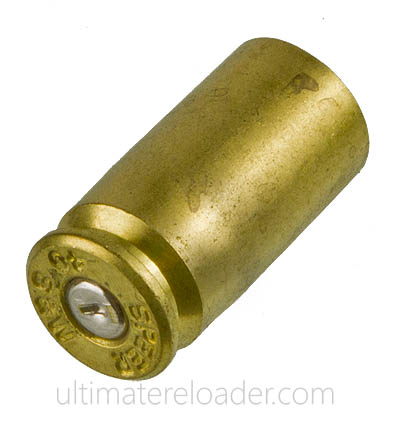
In fact, that’s exactly the type of brass that I’ll be using for this series – range pick-up brass that I purchased from one of the ranges that I’m a member at. Unfortunately, a typical sizing die will not completely remove this bulge (as the bulge is at the base of the cartridge). We need a special tool to remove this bulge in order to have reloaded ammunition that is both safe to fire, and reliable in operation.
One of the best tools for this job is the Redding GR-X die for 40 S&W / 10mm auto. This special die system pushes the entire length of the cartridge through a carbide sizing ring. In this way, the GR-X die ensures that we’ll have bulge free brass from case mouth to rim!
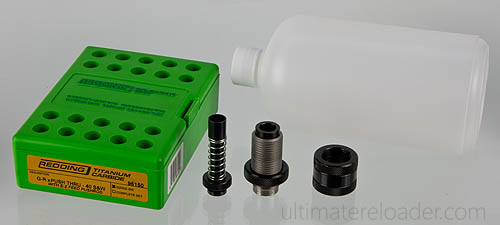
Here’s the description from the product page on http://redding-reloading.com:
The new G-Rx Carbide push thru base sizing die is designed to restore fired cases from 40 S&W autoloading pistols that exhibit a bulge near the base without the need for case lube. By passing the case completely through the new G-Rx Carbide Die, the bulge is removed and the case may be returned to service.
I’m planning to run *all* of my range pick-up brass through this die before loading it. That way I’ll be sure that I don’t have any bulge issues. For 10mm auto, I’ll be using brand new Starline brass, so I won’t have to worry about bulges for the first pass at least.
I’m really looking forward to loading these cartridges! Do you guys have favorite loads for 40 S&W or 10mm or both that you want to share? I’d love to have some feedback on that…
Thanks,
Gavin
**Note: Any load data on http://ultimatereloader.com is “use at your own risk”. Always cross-reference any data used with manufacturer’s data.
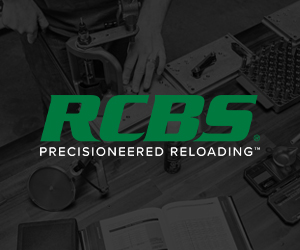
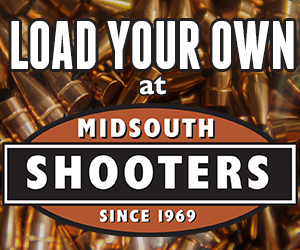

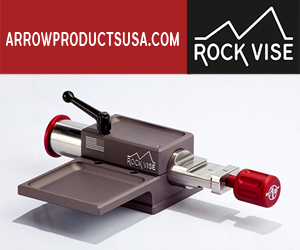
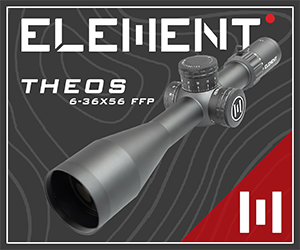

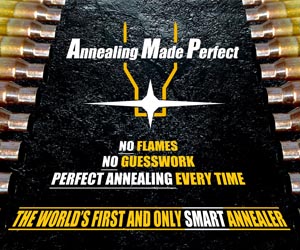
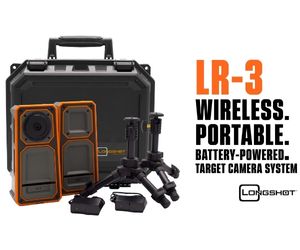
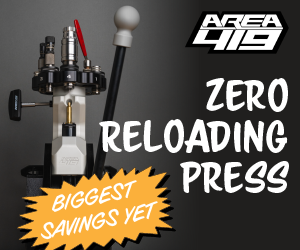
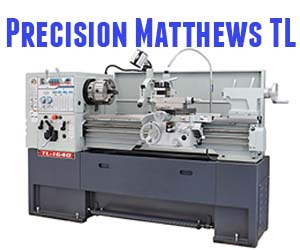

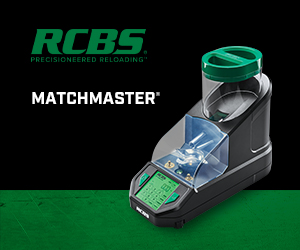



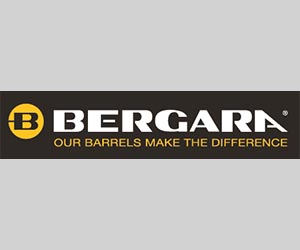
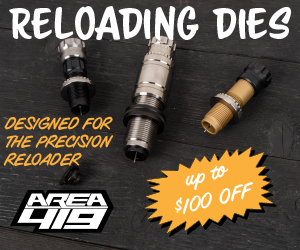


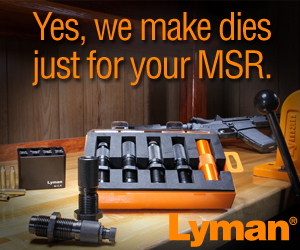
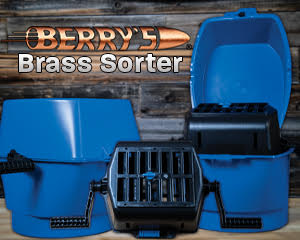



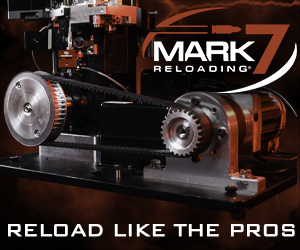
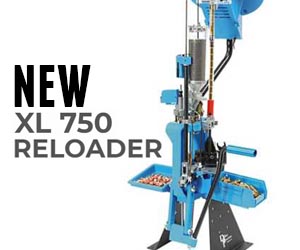
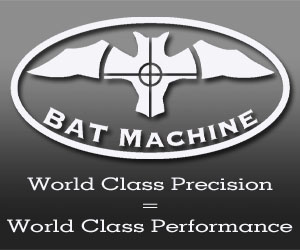
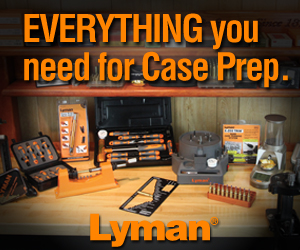
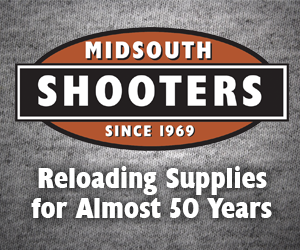

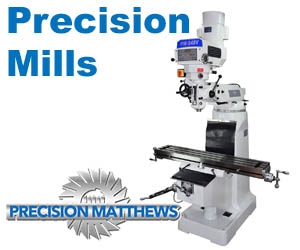


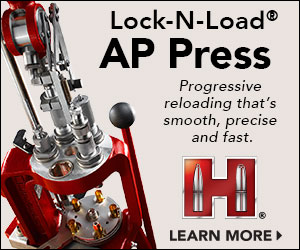
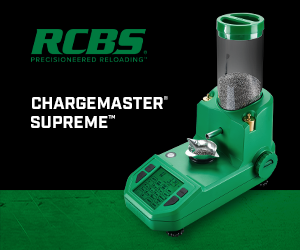

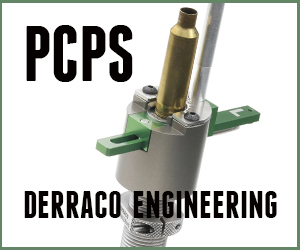
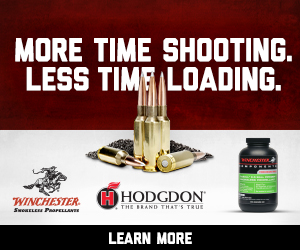

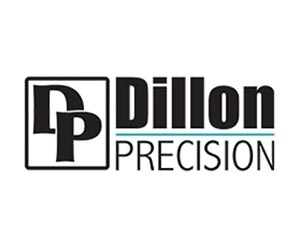

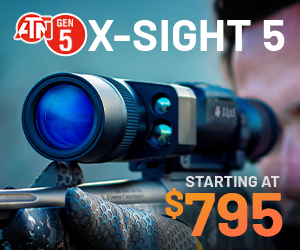

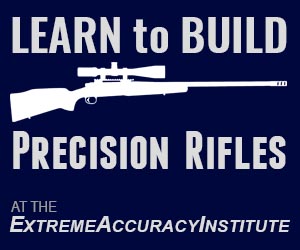




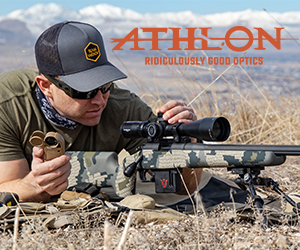

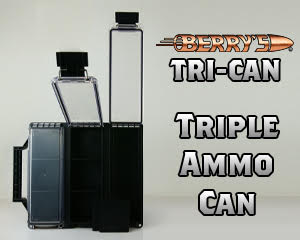

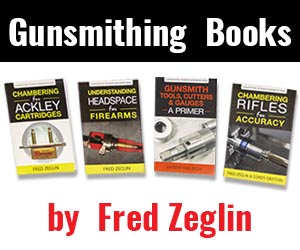




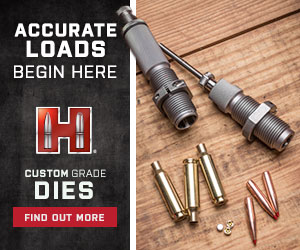


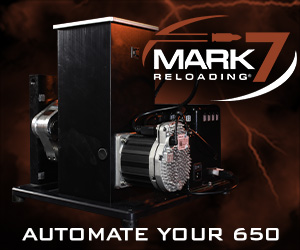

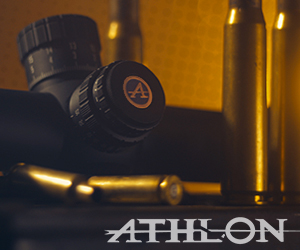

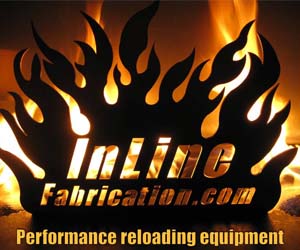
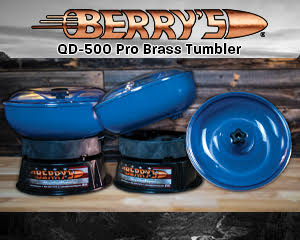
I load .40 and 10mm as well. I use a 200gr hornady FMJ for both loads. The .40 gets a 5.1gr charge of Unique which gives around 900FPS and the 10mm gets a 10.0-10.2gr charge of Blue Dot which is good for about 1075FPS. It’s a heavy for caliber bullet but I get great accuracy out if a new Delta Elite and Glock 20 for the 10mm and a Springfield XDm for the .40. 2400 and power pistol were good powders for 10mm but power pistol liked the light bullets. Can’t wait to see you’re data!!
I gut my Lee Factory crimp die and use a shell holder with a piece of 357 brass with a wooden dowel inside to push the now inverted .40 SW case up through the gutted crimp die. Works well for me.
I tried the Lee bulge buster with the Lee factory crimp die. It would not prepare the case to go in the Lyman 40 s&w gage checker. I sent it back and bought the Redding GR-X. Hopefully this will solve my problem.
Hmmmm…Have a Beretta Model 96…which I need to rework the trigger to rid this pistol of so much over travel…and my Glock 22…which I use more than any pistol I own. So I’m running thru around 300 to 500 rounds per month thru the Glock 22.
After examining the sized brass ran thru the Glock…loading then using the Factory Crimp Die supplied in the die set…I see no bulge. If there is a slight bulge, it is not seen. So why spend any more money than on a Lee set of Carbide Dies? The set includes the Factory Crimp Die which post sizes the loaded round as well as crimping. Yes…I apply.
Each to his own..but I have severral hundred 40 S&W cases and I can never locate all of the exjected brass…so there is a constant renewal of brass. I don’t believe you’d have a rupture of the case base due to brass fatigue and I haven’t after thousands of rounds ran thru the Glock and hundreds thru the Beretta Model 96. I’m sure if you’d never replace the brass it would fatique…but I know that I’ve reload many of this brass…well…a lot. And using range brass…how many times has some of this brass been reloaded? Of course a lot is once fired.
As far as loads go….I switch around the Lee powder disc throw..sometimes….between the 45 ACP/357 Mag/40 S&W. But I run 6 grains of unique for all which includes the 40 S&W of course. Accuracy is decent but defensive shooting is so close range….it ain’t target shooting!! But…at 20+- feet…grouping is a decent 2+- inches.
By the way….when setting up the Lee disc powder throw…use a scale to make sure what the disc size is throwing first. After checking…just use the same disc for that particular charge. What the book said the charge was on the disc was “NOT” what was thrown…thrown charge was lighter than stated. Just pointing out.
I’m curious as to how many times I can reload Tula/Wolf 40 S&W casings…steel cases of course but boxer primed….before fatigue sets in. But I can’t locate any. Everyone is always sold out!! We shall see. I’ll check to see about the bulging issue on these steel casings.
In normal reloading operation, the Lee Factory Crimp Die can not get to the base of the case where the “Glock bulge” is found. In order to size this part of the brass the case must be pushed all the way through.
The sizing die on the Lee die set actually sizes smaller than the FCD, but it cannot get to the base either because of the distance between the shellplate and the bottom of the die.
Good to know….I use the same ammo between the Beretta 96 and the Glock 22….but mostly the Glock. So I reexamined the loaded ammo to see if there were any decernable bulges left in my loaded ammo. If there is….I simply cannot see any bulge left.
I am at the point that I will probably never purchase any other pistols but Glocks. The Beretta shoots and handles well…but the over travel in the trigger messes with me. THAT I have got to work on. But none of my rounds fail to chamber in the Beretta.
Until I have an issue…and I hope I do not…I try and keep things simple. …I spend enough time reloading/casting/shooting/cleaning/etc as it is. And spend probably too much money to boot!!
Thanks for your input.
“Glocked Brass” is pretty common and you will see it if you run it through your dillon handgun case gauge,
http://www.dillonprecision.com/content/p/9/pid/25548/catid/3/Dillon_Handgun_Case_Gages
I use the redding GRX and like the results. I gauge every round I reload as a final inspection.
My favorite load is for practice. 180gr Montana Gold CMJ, Wolf/CCI small pistol primer, Hogdgon Titegroup 3.5 to 3.8 gr. Nice even push, not snappy. Easy to bump for IPSC or IDPA and known chrony since so many use this range of setup.
Are you selling any of the 40 cal brass, if you are give me a price and we will talk ok. you wrote a nice article, i like to read to read good stuff like that, its interesting. Have a good one. bob
I missed it…I do apply a light crimp to my 40 S&W rounds as well as my 45 ACP….LIGHT.
I load 10mm auto religously. My plinking rounds are 6.0gr of 231 under a Raineer 135gr round nose and my SD rounds are an above listed max load of AutoComp under a Nosler 135gr hollow point. I’ve tried 231 and HS6 under the SD load, but they both have huge fireballs that I DO NOT want in a low light situation. The AutoComp has little to no flash at all, and I run it right up to 1600FPS. I’ve loaded hotter, up to 1700FPS in new starline brass, but the kick is horrendous and I’d rather have a little less power and a much faster follow up. I run every round of 10mm I make through a stock barreled Glock 20 and the bulge produced by my late manufacture gen 3 is pretty minimal, so I often don’t bother with de-bulging my once fired brass, but I do retire it all to plinking, new brass only for my HOT loading.
I’m really looking forward to this one. So far I’ve only reloaded about 100 rounds and I mostly shoot 40 S&W. This site has been great in getting me started and has pointed out a lot of practical information and the videos let me actually see what I read in books. I’m also happy to say that next week my gas tube will be in so I can finish off my AR-15 build (the lower is already done). Gavin, you’ve made it easy to tackle any task you’ve covered. Maybe next you should do a balanced budget video and send it to Congress =) Thanks.
40 s&w is the round I shoot and reload the most. I’d never heard of the brass bulging until I read this article. I shoot a Beretta 96 and a PX4. I’ve always reloaded once shot brass from the range. I know a lot of ot came glocks since I pick up all the brass my friends shoot. There is a few glocks in our shooting group. Good to learn something new, I’ll have to keep track and see what I find.
I shoot mainly 40 S&W. I use range pickup brass and have never had an issue with the buldge. Replace your regular Decapping/sizing die with an EGW Undersizing die and that should be all you’ll need to eliminate any buldge. That’s what my shooting buddies use.
http://www.egwguns.com/undersized-reloading-dies/undersize-reloading-dies/
John
I shoot around 3 to 4 hundred 40 S&W rounds per month and you are right on about the cases.If you check the new factory rounds before you shoot they fit good in any of the 40 chambers,but if you shoot them in the Glock pistols they swell about .006 more.I load about 1000 rounds of 40 per month and have feed problems in other makes of pistols with the reloads.My pistol of choice is the Glock 22,when you pull the trigger it goes “bang”.
WOW, IF YOU ACTUALLY FIRE 1000 ROUNDS PER MONTH, HOW LONG DO YOU GET OUT OF A BARRELL.
THANKS,
TONYMY
Looking forward to the articles on the 40 S&W. I shoot 40 Minor PF in USPSA production and IDPA Stock Service Pistol. But have been planning on developing a Major PF load for Limited 10.
I have definitely seen the bulge in some of the range brass I’ve picked up. I may be more or less on Glock depending on the generation.
I always run my brass though a Lee FCD with the Bulge Buster kit added. For a long time I just used the FCD with the guts removed and a bullet pusher from a Lee bullet sizing die for the 40. The Bulge Buster makes it just a shade easier. I shoot mostly S&W M&P but also have a SIG 226.
I’d be interested in load workup for 40 Minor and 40 Major Power Factors for competition shooters. Currently I use 2.8gr of CLAYS with a 180gr Bayou Bullet. That’s a molly coated bullet. I’ve read post on some forums where some have a minor and major loads by only changing the bullet itself. Same powder and charge.
A caution on CLAYS, it is only to be used for light loads in the 40 S&W. From everything I have read the pressure spike curve is sudden and steep! I have loaded up to 3.5 grs with no pressure signs.
By the way for those who may not know. Power Factor “PF” is ((fps*bullet grs)/1000). Minor must be >= 125 and Major must be >= 165.
most 10mm loads are extremely weak. not a lot of upper range 200 /230 grain decent velocity loads out their. finding the original 10mm load that Col Jeff Cooper intended is a challenge. DoubleTap has good 10mm . probably the best you can buy for 10mm. (but I have yet to see them share recipies yet). for the bulge, that’s the nature of the Glock 20 and 29. getting a match oriented barrel would probably make a difference.
There is a LOT of load information on the web if you are willing to dig around, take all the information you get with a grain of salt and start low and work high. I’ve personally run quite a lot over book on several loads, and used some of the hotter internet recipes and they all run great. My favorite carry and SD powder so far is AutoComp. It can take loadings quite a bit above current book loads with no signs of overpressure at all and with essentially no muzzle flash, which makes it ideal for possible night use.
One other note, 200/230gr bullets in 10mm are not ideal for SD use. Especially since the only 230gr loads I’ve seen are LRN bullets, which I will lay cash will overpenetrate every time against a two legged, and most four legged targets. They are really only useful for large heavy targets, such as moose or bear defense. That aside the 165gr and 180gr loads are pretty ideal for SD and carry use. I happen to load the 135gr with the thought that it will be substantially less likely to cause harm to any of my neighbors should I have to let a round go in the house, and despite the massive velocity and muzzle energy, recoil is light enough that double taps are still very fast.
I shoot a lot of .40S&W (Sig P229 and P250, H&K P30 and P2000, M&P40, Kahr K40). I started using the EGW sizing die, but its undersizing combined with oversized cast bullets gave me occasional feeding problems. I switched to the GR-X carbide die and it’s fast and effective. I recently got a CasePro 100 roll sizer and it’s the ultimate in speed and effectiveness…it sizes brass as fast as you can pull the handle.
My favorite all around load is a 180g LRNFP from Dardas Cast Bullets over 6.0g of Power Pistol w/ an OAL of 1.140″
Interesting article on 40 S&W bullet choice: http://greent.com/40Page/ammo/40/180gr.htm
I load way more than 10,000 rounds of 40, 10 every year and I run all of the brass through a Case-Pro which roll sizes the case, no more bulge. I can do about 600 rounds an hour with this machine.
Ah, never heard of the Case-Pro. Thanks for mentioning that, Jim.
That pic in the article looks just like a bunch of .380 ACP brass I just processed through a Lee bulge buster. That works pretty well, but I wasn’t able to salvage all the otherwise good brass. Some of that brass just wouldn’t spring back enough to make it smoothly into the Wilson Cartridge gauge, although it would chamber in the barrel just fine. I threw it out anyway.
Processing brass like this is tedious, when you want to get on with loading. Now if the brass were less common, and more expensive, I probably wouldn’t feel this way.
So I took a machinist edge and laid factory new 40 S&W rounds on the edge…the rim on new cases touch the edge while the reloaded rounds…there is a slight bulge at the base of the case…an inward bulge above the outward bulge and the rim will not touch the edge…..interesting. Howbeit these inner/outter bulges are very slight…the bulges are there as is the clearance on the edge to rim.
I also took brass shot in my Berretta and brass shot thru my Glock….equal amount of rounds…and reloaded this brass…mixed in an open plastic container and fired equal rounds thru both pistols….slow fired…rapid fired…no failure to feed/fire/cycle. There was a total of 100 rounds tested so 50 rounds per pistol.
The point I was looking for is this. If there is no feeding/cycling issue using Lee or any other die setup that does not remove all of the bulges of fired cases…wheather thru a Glock or a Berretta…Springfield…Ruger….Sig or any other make…does it really make any difference? I am talking 100% no failure of course. But that is asking for a miracle since I’ve had factory fresh ammo with failures to feed/fire/cycle…though very rare.
I’m like most reloaders that have developed their own style of method…if something works and works well…we do not tend to change the routine. I use reloaded ammo for “Just on case you get into a tight situation” and have 100% confidence in my reloaded ammo for self defense. Even more so after this test I went thru.
All this being said….one must feel confident in his/her method….mental game I suppose.
My experience is that if you’re reloading for a Glock (and using their factory barrel), the bulge is fine and doesn’t affect feeding/reliability; however, if you’re reloading for another barrel or a Glock aftermarket barrel with a fully supported chamber, the bulge from “Glocked” brass MAY be a problem.
In my case, most of my once-fired brass comes from a fiend who shoots it through his G23, so nearly ALL of my once-fired .40S&W brass is bulged. I use a CasePro roll sizer to process all my brass and the bulge is eliminated.
I will save that info for sure. As I mentioned….I interchange my ammo between my Berreta 96 and my Glock. But the more I practice with my Glock/s….the more I am thinking about selling all my other auto pistols and replacing with Glocks. Except my S&W stainless compact 9mm….I can’t get that pistol to jam/fail to cycle as well. And handles well to boot. Very little if any over travel of the trigger so follow up shots just feel easy and natural. That’s why I like the Glocks so well…I did some work on the Glock’s triggers but not much.
I really can’t get too concerned with this bulge of ammo cases fired thru Glocks. I’ve never had a problem though I understand why the bulge takes place….after thousands of rounds thru my Glocks…and thousands thru my Glock 22…it has never failed to cycle…and I shoot lead bullets thru the factory barrel. But I clean the barrel after 50 rounds fired…+- 50 rounds anyways…so lead does not build build nor carbon/residue. Takes less than ten minutes to clean the Glocks anyways….unlike the Springfeild 1911-A1 Loaded version…that is a pain to take apart/clean/reassemble. I rarely ever shoot the 1911 A-1.
It’s very dry here…wind…heat…fires.
I don’t shoot semi-autos but I shoot .40s&w in my S&W 610. I wanted a load that would meet major power factor but not have the snappy impulse the this cartridge is famous for. After a lot of testing this is the load I shoot:
200 gr Bayou Bullet RN
4.1 gr WST
Federal SP primer
Mixed Brass but mostly Winchester
1.130 COAL
This load gives me a 170 PF, has reasonable recoil so I can shoot it all day. I usually shoot 300 – 500 rnds in my weekly practice sessions and it my hands never hurt.
what LNL setup is best for reloading 40 s&w without case and buller feeder…
Hi guys,
First time posting here 😉
I have loaded 10mm Auto for ages and as I am from Europe I mostly use Vihtavuori powders.
My current load for 10mm is 6.4 grains of VV N340 behind a Frontier 180 Gr RNFP bullet.
It is very clean burning with little to no muzzle flash, I do get ever so slightly flattened primers but no gas leakage or other overpressure signs. I fire this through my 2nd Gen Glock 20 and so far not really seen any bulges for this load, mostly using Starline Brass but have some Remington brass that has been loaded about ten times and no sign of bulging either.
I use the same powder for my 9mmPara where I have 4,8 grains behind a 124 HBRN bullet (this is rather hot but no signs of overpressure), this goes through my CZ75 with no problems (buying a Glock 17 and 34 later next month).
Just curious through, on the 40 S&W shot from a Glock doesn’t it cause the case to weaken? From what little bit I’ve read about this it isn’t recommended to reuse that brass in a Glock again for failure of a rupture.
Lots of good info on this website. Been reloading since about 1982 or 3 I think and still found some usefull information, thanks.
I use a Lee Bulge Buster for my .380 range brass. I’ve had some feeding issues. In fact today my wife had feeding issue with factory rounds. Two rounds wouldn’t chamber properly in her LCP.
This is my favorite load
COAL 1.130
180gr Montana Gold CMJ,
Wolf/CCI small pistol primer,
Hogdgon Titegroup 3.5 to 3.8 gr feels about the same
Winchester or Speer Brass
I find it silly people are so preoccupied with the above described bulges. The very same people who absolutely must get rid of any sign of case expansion on their 40 brass go right ahead and use standard dies for their bottlenecked rounds. These dies leave a bulge at the base of the case that would make a Glock owner run away in horror.
I have been reloading for 20 years. I have never found the need to use a Lee FCD or the Redding GRX or roll sizer machines. Standard dies are fine. People shouldn’t look for patches to fix problems resulting from their sloppy technique. They should improve their technique.
I have been reloading for 30 yrs but never have i had the problems that i am having with the 40 s&w. I have a beretta storm. I have reloaded cast bullets from Missouri Bullet Company 155 grn SWC and Lasercast Lead 155 grn round nose. The seating depth is set according to specs. The problem is loading a new round, the slide sometimes will not completely close. Sometimes a slight bump will close the slide and sometimes it will not. I have loaded for 45acp, 9mm, and even the 38 super with no problems. It almost seems to me that the headspace is being taken from the slight rim around the lead bullet and not the case itself. I have loaded dummy rounds in many different variations, racking them in the pistol until my fingers hurt with the same problems. What adds insult to injury, the beretta shoots the factory stuff with no problems. Anybody else had these problems? Thanks for any and all help. By the way i am using a taper crimp die from Lyman.
I have loaded thousands of rounds of .40. I mostly use vvn320. My glock 35 likes 4.2 grains behind a 180 grn at 1.124. I use 4.8 grn n320 for major loads which gives me a pf of 168 and its clean. I have used 3.8 grn titegroup behind a 180 grn at 1.110 with good results but is a bit dirty, and have used 3.4 grn for real soft recoil. I have also used 5.7 grn power pistol behind a 180 grn at 1.124 for major pf of 167 but it was dirty and gave pretty good muzzle flash at night.
Cory, I have had the same problem using a Lone Wolf barrel in my glock 30. My theory is the brass is bulged from the glock chamber. A normal sizing die doesn’t get the bulge completely out. The slide sometimes would just lack a fraction of an inch completely closing. This was just a problem in the Lone Wolf barrel. I assume the wolf barrel has a tight chamber.
I now have a Redding die like the one shown in the picture above to completely size down the brass. I haven’t shot any of the reloads yet, but I have high hopes that this solves the problem.
For now on, while at the range I never shoot new ammo or reloads in my glock barrel. Don’t want to mess up the brass.
Hi All
If any of use are from Australia and are
Looking for Once Fired 40 smith & wesson brass
Please contact me at milspec-brass@hotmail.com
Thanks
i onl!!y load for hunting and protection. i load 11.5 gr’s of longshot with 135 gr nosler JHC.. they give me superb accuracy. i will put 1-2 out of 3 shots at 100 yards in a silhoutte. i justt do not believe in shooting different loads. ya’ll take care
What powder charge do useing green dot with 40. S&W WITH 160 GR. FLAT NOSE ROUND
I have had a case fatigue and blow out on my Glock 23, with a fully supported Wolf Barrel. The brass did had bulges from an MP40 and I ran them through the bulge buster to fit into the Wolf barrel. The webbing blew out on the cartridge and cracked the frame, I was lucky that my hand was only stinging. I am a little paranoid now about using my reloads. Any ideas on inspecting the webbing?
i purchsed 1000 processed 40 s&w cases from diamond k….they were sized deprimed and polished….(they kindly sent over 1000) but after firing 16 rds….jam… 20 rds …jam….whether or not the quality control adhered to the sizing of the case or was it case buldging like you think …..iam going to resizeall the cases…. using these for life and death situations is questionable…also had serious problems with berrys 38cal hollow point target bullets..crimping issues and pathetic goups up 3.5 feet @30 ft
Anyone ever use a EGW 40 S&W / 10mm Undersize Reloading Die?
http://egwguns.com/tooling/undersize-reloading-die-.40-s-w/10mm/
I am planning to buy one in 40/10, 9mm, and 45 acp on my next trip to Quackertown Pa.
I am just starting to put together a die set to reload 40 S&W.
Bulging cases: I have had maybe 2 cases out of 100 Fail to pass Drop Test in barrel ( due to lower case bulging) All cases had been shot out of my S&W M&P Pro 40. ( more widespread than just a ‘Glock bulge’ )
MOST rounds are very low pressure rounds for IDPA & Steel Challenge. ( avg about 20% below minimum loads in book, & still above IDPA PF of 125 )
Some cases had been OE loads, so fired high pressure at least once.
Bulge is bad enough to lock up gun ( slide 1/8″ Out of Battery…..& case stuck BAD ) Big flat screw driver & move slide 1/8″ & all freed up.
Cause: new press, I hadn’t set the sizing die as low as I should.
Rounds that failed the Drop Test…..were easily corrected when die set correctly….& they Passed Drop Test.
Brand of die: RCBS Carbide
They corrected 100% of maybe 20 cases that wouldn’t pass prior. One pass & done!!
Guess I’ve been lucky, huh?? I carried and shot the hell out of a Glock 23 using ONLY range brass with 180 grain LEAD bullets. Used Lee die set(adjusted PROPERLY) and never had any issues. Of course, I treated the lead bullets with liquid ALOX before loading; no lead problem either. 800 rounds for qualifying for a reserve deputy; not one misfire OR stovepipe. 230,230,230, 216 off hand.